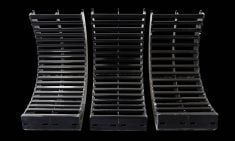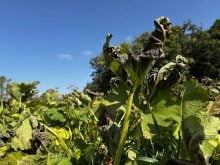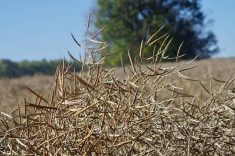Delayed seeding and other factors put this year’s crop well behind the five-year average but there’s reason for optimism heading into harvest time.
After the agonizing wait for fields to dry this spring, followed by heavy rains through summer, harvest has been delayed by several weeks. Now it looks like the conditions are improving as the summer winds down.
[CROP REPORT] Harvest progress behind five-year average, crop conditions good
Read Also

Manitoba Ag Days 2026 coming up fast
Canada’s largest indoor farm show, Manitoba Ag Days, returns to Brandon’s Keystone Centre Jan. 20-22, 2026. Here’s what to expect this year.
The weather forecast for September is for warm and dry conditions and based on historical averages, an early killing frost seems unlikely. In addition, early estimates suggest crop yields will be significantly better than those of drought-ridden 2021.
According to Timi Ojo, agricultural systems modeller with Manitoba Agriculture, weather modelling suggests the outlook through late September is about as good as could be expected. Most parts of the province will be near or above seasonal norms for this time of year, which is good news for drydown and harvest.
When projections of a warm, dry September are paired with recent history of frost risk, the picture is even brighter.
“We seem to have a trend of later fall frost,” Ojo said. “In the last 10 years, we’ve only had three years in which the fall first frost occurred earlier than Sept. 24.”
And one of those three frosts was nothing to write home about.
“It was a very mild frost (-0.4C), and it only occurred for a few minutes. So, technically, it’s still a frost, but not a killing forest by any means.”
According to field crop estimates from StatsCan, released Aug. 29, yields in Manitoba are anticipated to be near normal. StatsCan uses satellite technology and agroclimatic data to model preliminary estimates of crop yields and production.
In Manitoba, wheat harvested area is expected to rise by 11.4 per cent to 3.2 million acres, while yields are anticipated to increase by 20.5 per cent to 57.7 bushels per acre. Total wheat production is anticipated to rise by 34.2 per cent year over year to five million tonnes.
Canola yields are expected to rise by 31.5 per cent to 43 bu./acre in the province, offsetting an anticipated 3.8 per cent decrease in harvested area to 3.3 million acres. That would result in a 26.5 per cent production increase to 3.2 million tonnes.
Soybean production is projected to increase by 13.6 per cent to 1.1 million tonnes in 2022. The harvested area is projected to decrease by 14.3 per cent to 1.1 million acres. However, yields are projected to rise by 32.5 per cent year over year to 35.9 bu./acre because moisture conditions have improved.
According to Manitoba Agriculture, winter cereal harvests are nearing completion. Fall rye yields are averaging in the 60 to 70 bu./acre range.
For spring crops, harvest has progressed slowly because high humidity has hampered natural drying, but spring wheat is ripe in many regions. The weather forecast is positive for drydown. At press time, many barley crops had reached the hard dough stage. Oat swathing had started and early harvest yields were above average in the central region, between ??? and 170 bu./acre with good test weight. Many oat fields remained standing.
Canola swathing had started in the central, eastern and Interlake regions. The earliest fields were being harvested in the Winkler area, and average yields were slightly less than expected at 50 to 55 bu./acre on average. Yields on canola in the southwest region near Melita were reported at 40 to 45 bu./acre on average.
Field pea harvest was underway in all regions to varying degrees. Harvest was most advanced in the northwest region, at 65 to 70 per cent complete. Reported yields were 50 to 60 bu./acre on lighter land, while better land had reported yields of 70 to 80 bu./acre. Desiccation of peas was ongoing in much of the central, Interlake and southwest regions.
















